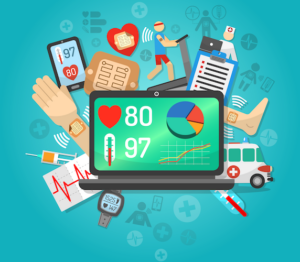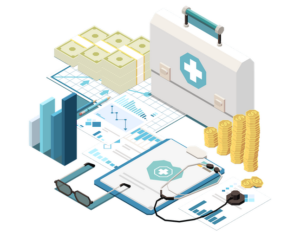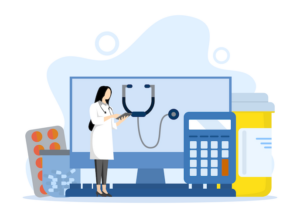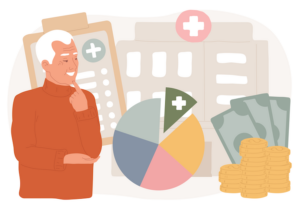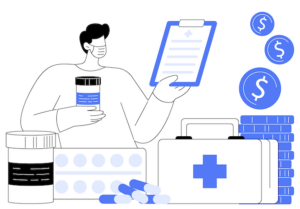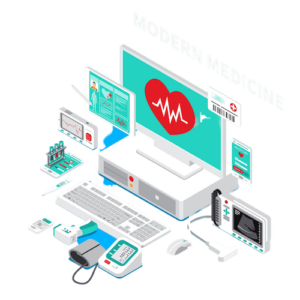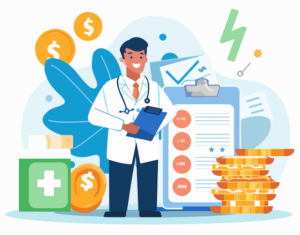Navigating the labyrinth of medical device development isn’t for the faint-hearted, especially when the cost of medical device development poses such a formidable challenge. You’re up against an intricate mix of innovation demands, regulatory complexities, and budget constraints—each more pressing than the last.
We understand the intense scrutiny you face to deliver cutting-edge devices while ensuring operational efficiency and compliance. That’s why cost analysis becomes your guiding star, illuminating the path through financial pitfalls and strategic planning.
In this blog, we’ll delve into actionable insights, tailored to help you streamline processes, mitigate risks, and ultimately, drive your organization towards sustainable success.
Top Takeaways:
- When considering the average cost to develop a medical device, expenses can reach upwards of $30 million, particularly for Class II 510(k) cleared devices, where around $24 million is allocated to FDA-required activities like clinical studies. Development and engineering contribute $2.5-5 million to the total, with software devices being more cost-effective at approximately $3 million. For Class III devices, costs can soar to $94 million.
- A medical device cost breakdown reveals that major cost drivers include design validation, regulatory compliance, and iterative prototyping. By optimizing these stages—particularly through smart prototyping and the use of digital twin technologies—companies can achieve significant savings, potentially reducing expenses by 20-30%.
- Addressing the cost of building a medical device, it’s important to recognize that beyond production, regulatory milestones can consume over 50% of your total budget. Engaging early with regulatory bodies and adopting lean methodologies can streamline processes, reduce time-to-market, and keep development costs in check.
Table of Contents
- What is Medical Device Development?
- Stages of Developing Medical Devices and Cost Breakdown
- Key Factors Influencing Medical Device Development Costs
- How Long Does It Take to Develop a Medical Device?
- How Can One Optimize Costs in Medical Device Manufacturing?
- Regulatory Compliance and Its Impact on Development Costs
- Opportunities to Reduce Costs of Medical Device Development with Emerging Technologies
- Key KPIs for Monitoring Medical Device Development Projects
What is Medical Device Development?
Medical device development is a complex process involving the design, creation, and assessment of devices aimed at enhancing patient care. It requires a multidisciplinary approach, combining cutting-edge technology with rigorous testing and regulatory compliance to ensure safety and efficacy.
In healthcare, this development drives innovation, improves patient outcomes, and advances healthcare capabilities, essential for those leading digital transformation initiatives. By fostering collaboration among engineers, clinicians, and regulatory experts, medical device development not only addresses current healthcare challenges but also anticipates future needs, paving the way for groundbreaking medical advancements.
In developing medical devices, collaboration with a healthcare app developer can streamline the integration of digital solutions that enhance device functionality.
Stages of Developing Medical Devices and Cost Breakdown
The journey from idea to market-ready product in the realm of medical devices is intricate and multidimensional. Each stage of the development process carries its own set of challenges and costs associated with bringing a device to fruition. Understanding these stages and their respective expenses is crucial for effectively managing medical device development costs.
Concept and Feasibility Studies
The initial phase is all about refining the concept and determining feasibility. Medical device companies must undertake thorough market research, competitive analysis, and technical feasibility studies. This stage involves relatively low costs compared to later phases but is critical for setting a strong foundation. Considerations during this phase include:
- Feasibility assessments
- Intellectual property searches
- Initial regulatory consultations
Research & Development (R&D)
R&D is where the bulk of innovation happens, and consequently, it can be one of the most expensive stages. At this point, medical device firms invest heavily in creating prototypes, conducting preliminary testing, and developing the necessary technology components. The cost associated with R&D is driven by the complexity of the medical devices being developed and the extent of innovation required.
Design and Engineering
Once feasibility is established, the design and engineering stage focuses on creating detailed design specifications. This phase is heavily influenced by the device’s complexity and the regulatory requirements it must meet. Design verification and validation are critical to ensure the device can be reliably manufactured. Key cost drivers include:
- Specialized engineering teams
- Comprehensive design testing
The importance of healthcare mobile app design cannot be overstated, as it directly influences the usability and accessibility of medical devices in patient care.
Prototyping and Testing
Prototyping is essential to validate the design and functionality of the device. Iterative prototyping and rigorous testing help identify potential issues early, reducing long-term risks and costs. This stage can be costly depending on the materials used and the number of iterations required. To manage these costs effectively:
- Employ strategic prototyping to reduce unforeseen design changes
- Use cost-effective materials where possible
Regulatory Compliance
Navigating regulatory requirements is a critical aspect that significantly impacts medical device development costs. FDA approval and CE marking processes demand extensive documentation, clinical trials, and compliance testing. These activities require substantial investment and influence the timeline to market. Considerations include:
- Budgeting for regulatory milestones
- Ensuring thorough compliance testing
Manufacturing and Scaling
After regulatory approval, the focus shifts to manufacturing costs and scaling. This involves setting up production lines, ensuring quality control, and optimizing manufacturing processes. Costs associated with this stage depend on the production volume and the complexity of the manufacturing process. Efficient manufacturing strategies can help contain these costs while maintaining product quality.
Effective medical device integration is crucial for ensuring that new devices work seamlessly with existing healthcare systems, improving overall efficiency.
Marketing and Distribution
Finally, getting the medical devices into the hands of healthcare providers requires robust marketing and distribution strategies. This stage encompasses market launch campaigns, distributor negotiations, and logistics management. Key activities include:
- Developing targeted marketing strategies
- Managing distribution logistics efficiently
In summary, each stage of medical device development presents unique cost challenges that must be carefully managed. By understanding the medical device cost breakdown and strategically planning for these stages, medical device companies can optimize their budgets and ensure a smoother path to market entry.
Read more on healthcare app development.
Key Factors Influencing Medical Device Development Costs
In the complex landscape of medical device development, understanding the key factors influencing costs is pivotal. The average cost of designing a medical device is a multifaceted figure influenced by numerous elements. Recognizing these influences can aid in strategic planning and cost management.
Device Complexity
The complexity of a device is a primary driver of development costs. Whether it’s a simple diagnostic tool or a therapeutic complex medical device, the design intricacy dictates the resources required. For complex devices, the costs can escalate due to the need for advanced technology and specialized materials. This complexity also affects the cost of bringing a device to market, often requiring extensive testing and validation.
Regulatory Requirements
Regulatory requirements are a significant cost factor. From initial feasibility study stages to pivotal study phases, ensuring compliance with agencies like the FDA demands substantial investment. A critical component of this process is the FDA PMA review, which is particularly pertinent for complex devices requiring premarket approval. This FDA review process, while essential for market entry, can be resource-intensive due to its thoroughness in evaluating efficacy and safety.
Achieving SaMD certification is a critical step in validating the safety and performance of software as a medical device, a growing component in modern device development.
Compliance with these rigorous standards also necessitates substantial cybersecurity measures, balancing security with usability and cost-effectiveness. This often requires consultation with experts from a human services office to ensure all regulatory criteria are met. Although these activities are crucial for securing market approval, they can significantly influence the overall development costs, especially for innovative or complex devices. By strategically planning for these regulatory challenges, companies can manage costs while maintaining compliance.
Time to Market Pressures
The race against time is another critical factor. Reducing time to market can offer competitive advantages, but it often requires increased spending on expedited testing and regulatory processes. However, strategic planning during the feasibility study phase can mitigate these expenses by identifying potential roadblocks early on.
Technological Integration
With the integration of cutting-edge technologies such as AI and machine learning, the development process becomes more efficient yet costly. Leveraging these technologies can streamline testing and compliance but requires upfront investment in technology infrastructure and talent. Successfully integrating technology can reduce long-term costs, particularly in the testing and validation stages.
Human Resources and Expertise
Finally, the expertise involved in designing and developing medical devices is indispensable. Hiring a skilled team of engineers, regulatory experts, and project managers can drive up initial costs but is vital for maintaining quality and compliance. Investing in top-tier talent ensures that the device meets the necessary standards and can reduce costly errors during the development process.
By understanding these key factors, healthcare leaders can navigate the intricacies of medical device development costs, optimize their budgets, and streamline the path to market entry.
Incorporating wearable technology in healthcare into medical devices can significantly enhance patient monitoring and data collection capabilities.
Also Read: App Development Costs Breakdown
How Long Does It Take to Develop a Medical Device?
Developing a medical device is a complex journey, generally spanning several years and shaped by various phases along with external factors.
Here’s a typical timeline breakdown:
- Concept Development: This initial phase can take several months to a year. It involves refining ideas and conducting feasibility studies to lay the groundwork for the device.
- Prototyping: During this stage, design iterations and tests are conducted. The duration can range from one to two years, influenced by the device’s complexity and technological availability.
- Testing and Validation: Essential for ensuring safety and efficacy, this phase can last from six months to several years, largely dependent on the device’s risk category.
- Regulatory Approval: Compliance with standards like FDA or CE is crucial, with this process taking anywhere from six months to a few years, depending on regulatory requirements and device classification. In rare cases (for simple gadgets), some may get approval in as short as 3 months.
- Market Launch: This final phase involves scaling up manufacturing and distribution, typically taking an additional six months to a year.
Factors such as device complexity, evolving regulatory landscapes, and technological advancements play pivotal roles. By strategically managing these elements, healthcare organizations can effectively navigate timelines, ensuring the timely delivery of innovative solutions to the market.
To maximize interoperability, it’s essential to understand how to integrate a health app with Epic EHR/EMR, ensuring that new medical devices can communicate effectively with established electronic health systems.
How Can One Optimize Costs in Medical Device Manufacturing?
Optimizing the average cost of medical devices is a key priority for visionary leaders steering digital transformation and operational efficiency. By adopting strategic approaches at their organizations, they can significantly reduce the overall cost throughout each development stage.
Lean Development Approaches
Implementing lean methodologies can streamline processes and eliminate waste, effectively lowering costs. By focusing on value-driven activities and minimizing unnecessary steps, medical device companies can enhance efficiency during phase transitions. This approach ensures resources are allocated effectively across various development stages, thus reducing the average cost of medical devices.
Smart Prototyping and Testing
Investing in smart prototyping and testing strategies can substantially lower costs. By using rapid prototyping techniques and iterative testing, companies can identify design flaws early, minimizing expensive redesigns later. This proactive approach facilitates smooth phase transitions from initial concepts to clinical studies, cutting down the time and cost related to pivotal studies.
- Utilize rapid prototyping tools to test multiple design iterations quickly.
- Focus on early detection of design flaws to avoid costly late-stage revisions.
Exploring web3 development in healthcare offers new avenues for secure, decentralized data management in medical device ecosystems.
Leveraging AI and Machine Learning
AI and machine learning provide powerful tools for optimizing medical device development costs. These technologies enhance predictive modeling and data analysis, improving decision-making during clinical studies and beyond. By predicting outcomes more accurately, companies can avoid costly pitfalls and streamline the development phase, facilitating a seamless transition to market.
Outsourcing and Partnering for Cost Efficiency
Outsourcing specific development tasks can be a strategic move to lower costs. By partnering with specialized firms for certain stages of development, such as manufacturing or regulatory affairs, companies can leverage external expertise without the overhead of maintaining in-house capabilities. This strategy can significantly reduce the overall cost while maintaining quality and compliance.
Mitigating Regulatory Delays
Efficiently navigating regulatory requirements can save both time and money. By anticipating potential regulatory hurdles and preparing for them in advance, companies can avoid costly delays. Incorporating regulatory compliance into each phase transition ensures that the device meets necessary standards, smoothing the path through clinical and pivotal studies.
By adopting these strategies, healthcare leaders can effectively manage the average cost of medical devices, ensuring a more streamlined and cost-efficient development process.
The integration of medical billing software development can enhance the financial management aspect of medical devices, streamlining reimbursement processes.
Regulatory Compliance and Its Impact on Development Costs
Dancing through the maze of regulatory compliance is an essential yet daunting part of medical device development. The average cost to bring a medical device to market is significantly influenced by these regulatory hurdles, and understanding how to manage them can make or break project budgets.
FDA Approval Process and Costs
The journey through regulatory approval, particularly the FDA’s pathway, demands meticulous attention to detail. The FDA’s premarket approval (PMA) process is often a substantial financial investment. A successful PMA submission requires comprehensive validation, from extensive documentation to rigorous clinical study results demonstrating safety and efficacy. This pathway is crucial for high-risk devices but can inflate costs and timelines if not managed efficiently.
Navigating International Regulatory Frameworks
Beyond U.S. borders, each market presents its own regulatory landscape. To commercialize a device internationally, understanding and adhering to diverse regulations—from CE marking in Europe to other regional requirements—is paramount. Each jurisdiction has unique demands, which means strategic planning is crucial to avoid redundant testing and streamline submissions.
Understanding the cost of EHR implementation is important for budgeting the integration of new devices with electronic health records systems.
Strategies to Reduce Compliance-Related Costs
- Early Engagement with Regulatory Bodies: Initiating conversations with regulatory agencies early in the development process can provide valuable insights and reduce the likelihood of costly redesigns or delays.
- Leveraging Regulatory Expertise: Employing or consulting with regulatory experts can preemptively address potential hurdles, paving a smoother path through FDA PMA submission processes and similar frameworks.
- Integrated Compliance Tools: Using advanced compliance software can help track regulatory changes and integrate these seamlessly into the development cycle, minimizing disruptions and ensuring up-to-date compliance.
By mastering these regulatory challenges, organizations can effectively manage the average cost of bringing a medical device to market, maintaining compliance without hemorrhaging resources. This approach not only ensures adherence to necessary standards but also positions a company favorably in the competitive market landscape.
Innovations in medical patient scheduling software can be paired with new device technologies to improve patient flow and appointment management.
Opportunities to Reduce Costs of Medical Device Development with Emerging Technologies
In the ever-evolving landscape of medical device development, emerging technologies offer a beacon of hope for reducing expenses and enhancing efficiency. For those pondering, “How much does it cost to develop a medical device?” These innovations present a strategic advantage, making the path to market not only feasible but also financially savvy.
AI/ML in Streamlining Development and Compliance
AI and ML are revolutionizing the way medical devices are developed. By automating routine tasks and analyzing vast datasets, these technologies streamline the development process and enhance decision-making. AI/ML can identify potential design flaws early on, reducing the need for costly revisions and expediting compliance through predictive insights that align with regulatory standards.
- Automates routine tasks to save time and resources
- Identifies design flaws early to minimize costly iterations
- Enhances decision-making with data-driven insights
Employing large language models in healthcare can enhance data interpretation and decision-making processes within medical devices.
Digital Twin Technologies for Simulated Testing
Digital twin technology has emerged as a game-changer by creating virtual replicas of physical devices. This allows for exhaustive testing and optimization in a simulated environment before a device is physically produced. By identifying issues and improving designs in the virtual realm, developers can save time and resources, significantly cutting down the average cost to develop a medical device.
- Supports extensive testing without physical prototypes
- Facilitates design optimization in a virtual environment
The role of chatbots in healthcare is expanding, offering potential benefits in patient interaction and data gathering for medical devices.
Cloud Solutions for Scalable Development
The adoption of cloud computing in medical device development enables scalable and flexible processes. With cloud solutions, teams can collaborate across geographies, ensuring real-time data sharing and integration. This not only accelerates development timelines but also reduces infrastructure costs, providing a more agile approach to project management and resource allocation.
- Enables real-time data sharing and integration
- Reduces infrastructure costs with scalable solutions
- Enhances collaboration across dispersed teams
Predictive Analytics for Cost Forecasting
Predictive analytics offers a data-driven approach to anticipate and manage project costs. By leveraging historical data and current market trends, predictive models can forecast financial requirements, helping teams budget more accurately and identify potential cost overruns before they occur. This foresight ensures better financial planning and optimizes resource allocation.
- Provides accurate budget forecasting using historical data
- Anticipates potential cost overruns proactively
Reducing Long-Term Technical Debt Through Smart Implementation
A proactive approach to technology implementation can mitigate long-term technical debt, which often arises from short-term solutions that compromise future efficiency. By investing in robust, scalable frameworks and maintaining a focus on high-quality code and architecture from the onset, companies can prevent the accumulation of technical debt that would otherwise incur additional costs over time.
By embracing these technologies, organizations can effectively address the question of “how much does it cost to develop a medical device,” positioning themselves to not only reduce immediate expenses but also gain a competitive edge in the market through innovation and efficiency.
Learning how to develop an EHR/EMR system is vital for ensuring that medical devices can efficiently interact with electronic medical record systems.
Key KPIs for Monitoring Medical Device Development Projects
In the complex world of medical device development, understanding and tracking key performance indicators (KPIs) is essential for driving success. These metrics offer invaluable insights into the efficiency and effectiveness of the development process, helping to manage the average cost to research/develop a medical device while ensuring projects stay on track and within budget.
Return on Investment (ROI)
ROI is a critical metric that measures the profitability of your investment in medical device development. It helps assess the financial returns compared to the project costs, guiding strategic decisions and prioritization:
- Calculate by comparing net profit to total development costs
- Use ROI to evaluate the long-term financial viability of different projects
Time to Market (TTM)
Time to Market is a pivotal KPI in the fast-paced healthcare industry, where delivering innovations quickly can be a competitive differentiator:
- Monitor the duration from project initiation to market launch
- Aim to reduce TTM through efficient project management and streamlined processes
Cost-to-Revenue Ratio
This KPI evaluates the cost efficiency of a project by comparing the total development expenses to the generated revenue:
- A lower ratio indicates higher efficiency and profitability
- Regularly assess and adjust strategies to improve this ratio
A robust medical practice management system can support the operational integration of new medical devices, improving practice efficiency.
System Uptime and Operational Efficiency
For medical devices, ensuring reliability and continuous operation is crucial:
- Track system uptime to ensure devices are available and functioning as required
- Measure operational efficiency to identify areas for improvement and cost savings
Compliance and Regulatory Milestones
Meeting regulatory requirements while controlling costs is a delicate balance:
- Track progress against key regulatory milestones to stay compliant
- Use this KPI to anticipate and mitigate potential compliance-related delays or costs
Project Completion Rates and Timelines
Monitoring project timelines and completion rates is essential for maintaining momentum and meeting deadlines:
- Use this metric to assess project health and identify bottlenecks
- Implement corrective actions promptly to keep projects on schedule
Data Security Performance Metrics
In an era where data breaches can devastate reputations and finances, maintaining robust data security is non-negotiable:
- Measure the effectiveness of data security protocols and incident response times
- Regularly update security measures to protect sensitive data and maintain compliance
In navigating the intricate landscape of medical device development, understanding the key cost drivers, regulatory hurdles, and time constraints is paramount for healthcare decision makers. This comprehensive analysis underscores the importance of strategic cost management and leveraging emerging technologies to streamline operations and optimize budgets efficiently.
While the journey of developing medical devices presents unique challenges, partnering with experts in medical device software, like Topflight, can provide a pivotal edge in harnessing technology for better efficiency and compliance. As you explore these complexities, including the cost of building a medical device, remember that our team is here to support your journey with cutting-edge software solutions, ready to tailor advancements to your specific needs.
Frequently Asked Questions
How does the complexity of the device affect development cost?
The complexity of a medical device significantly impacts development costs. More complex devices often require advanced technologies, intricate designs, and comprehensive testing, all of which drive up expenses. Additionally, complex devices may necessitate specialized expertise and prolonged development timelines, further increasing costs.
Can you provide a breakdown of the different medical device development stages and associated costs?
Certainly. Medical device development typically involves several stages. Concept and Feasibility Studies: Initial research to validate ideas can be cost-effective but crucial. Research & Development (R&D): This phase is labor-intensive and can be costly, particularly with innovative technologies. Design and Engineering: Expenses here vary with complexity, focusing on creating a manufacturable and compliant design. Prototyping and Testing: Iterative testing and refinement can drive costs but are essential for reliability. Regulatory Compliance: Achieving approval (e.g., FDA, CE) is both time-consuming and costly, often representing a significant budget portion. Manufacturing and Distribution: These costs depend on materials, production scale, and distribution logistics.
What strategies do you use to manage and optimize costs throughout the development process?
We emphasize lean development methodologies and strategic planning from the outset. By leveraging AI and digital twin technologies, we streamline prototyping and testing. Early engagement with regulatory bodies and smart allocation of resources also play a critical role in cost optimization.
How do regulatory requirements impact the total cost of medical device development?
Regulatory requirements substantially affect total development costs. Compliance with standards like FDA or CE involves rigorous testing and documentation, which can be both time and resource-intensive. Early planning and understanding of these requirements can help mitigate delays and unforeseen expenses.
What funding options or partnerships do you recommend to help manage financial investment in device development?
We suggest exploring various funding avenues such as grants, venture capital, and strategic partnerships with industry leaders. Collaborating with experienced partners can provide not only financial support but also valuable expertise and resources, enhancing the overall development process.
